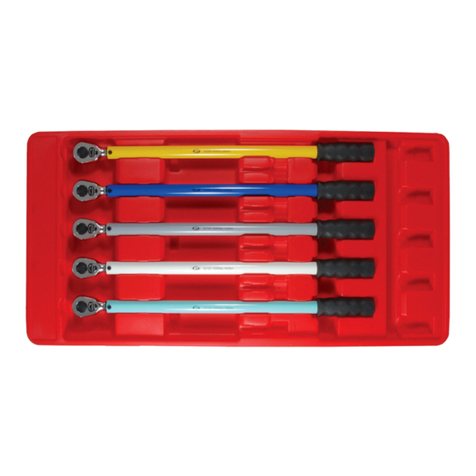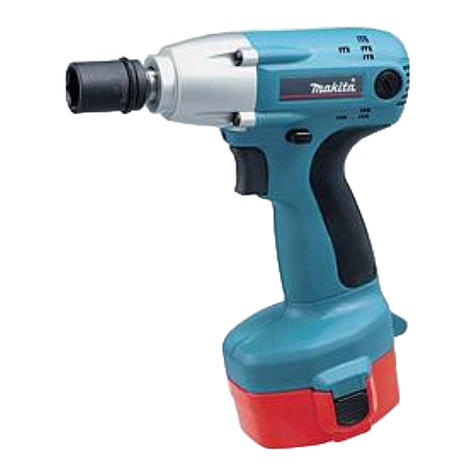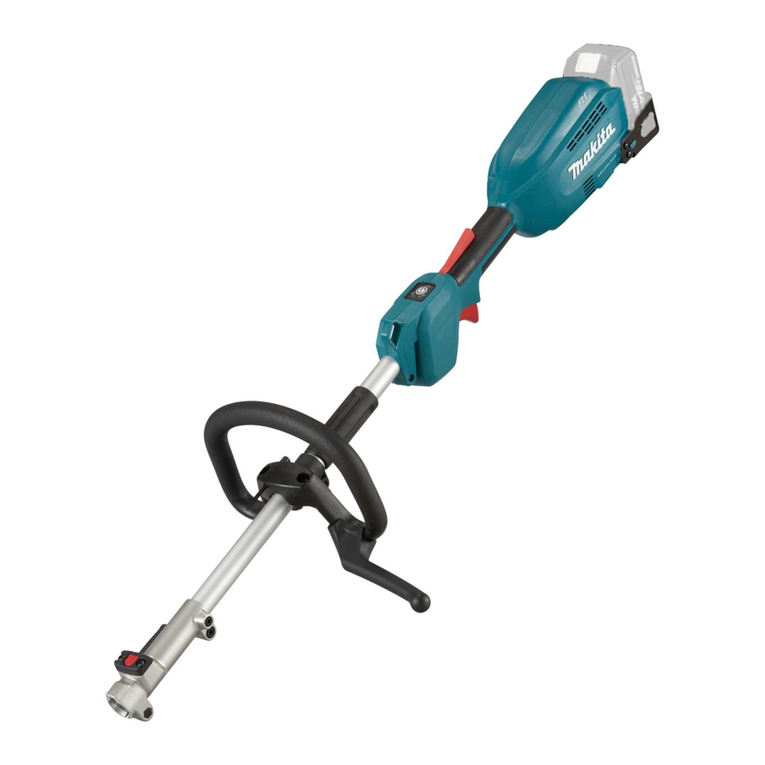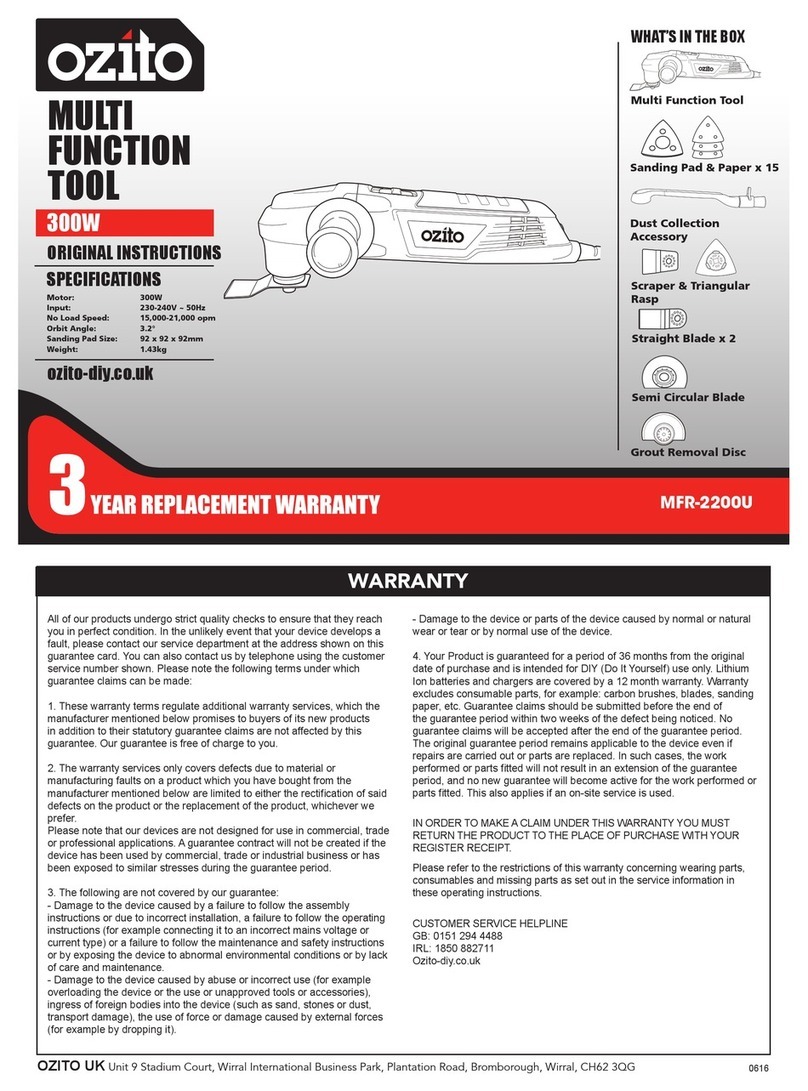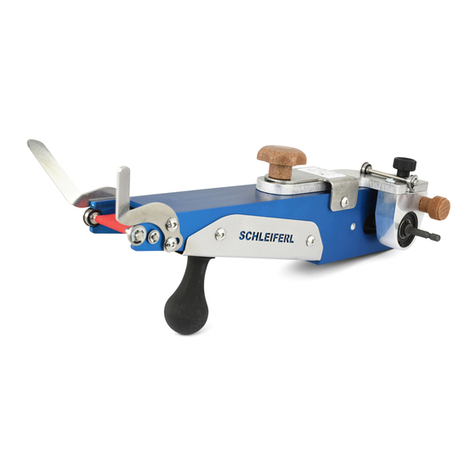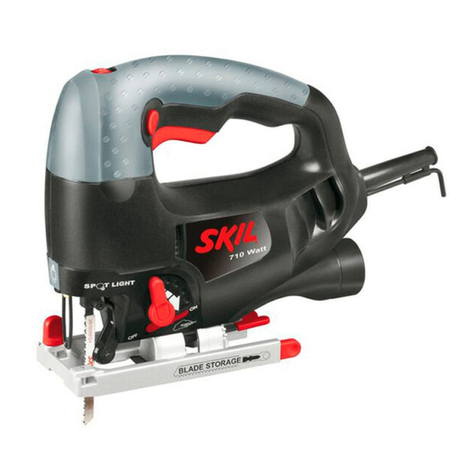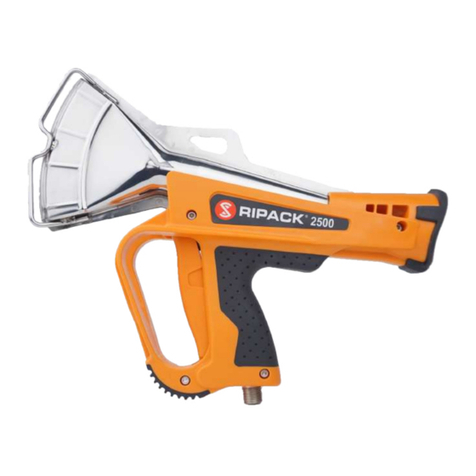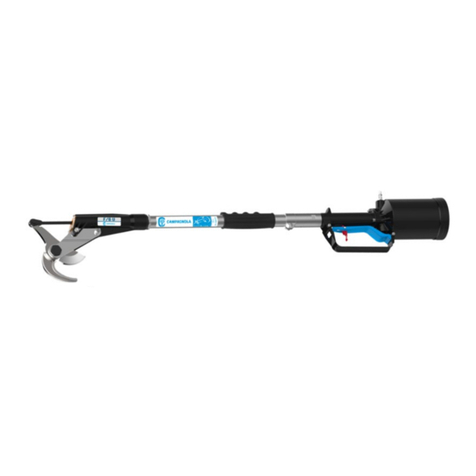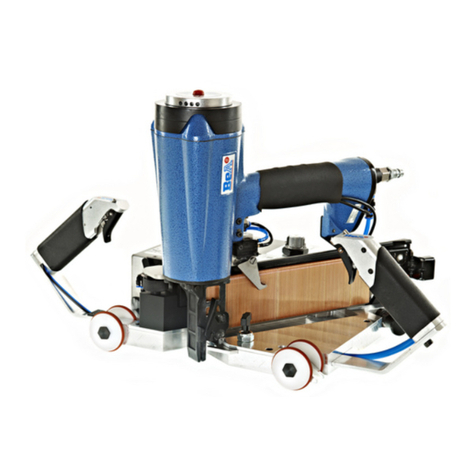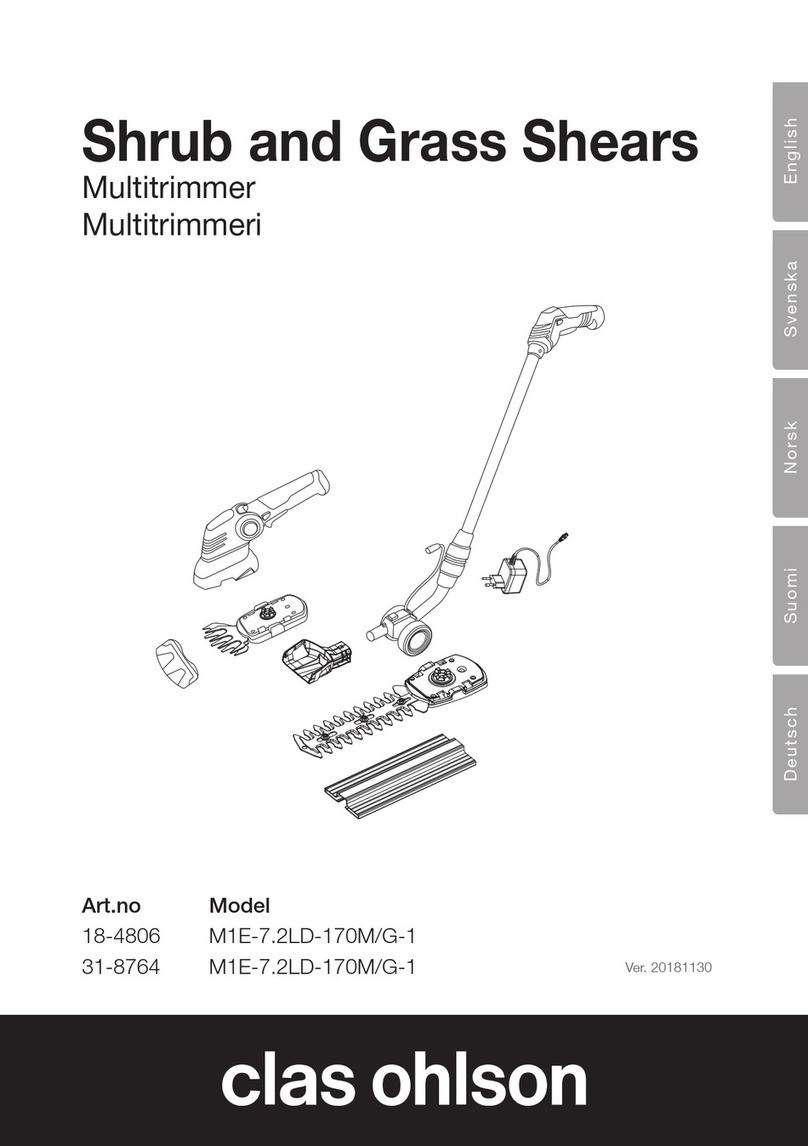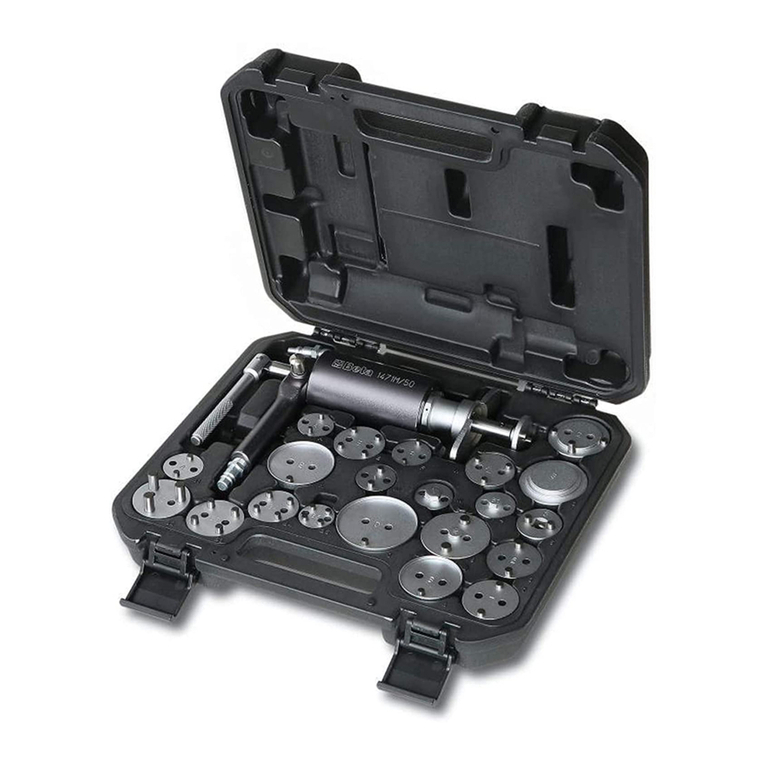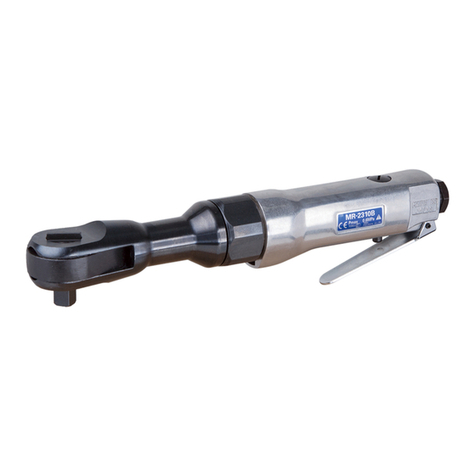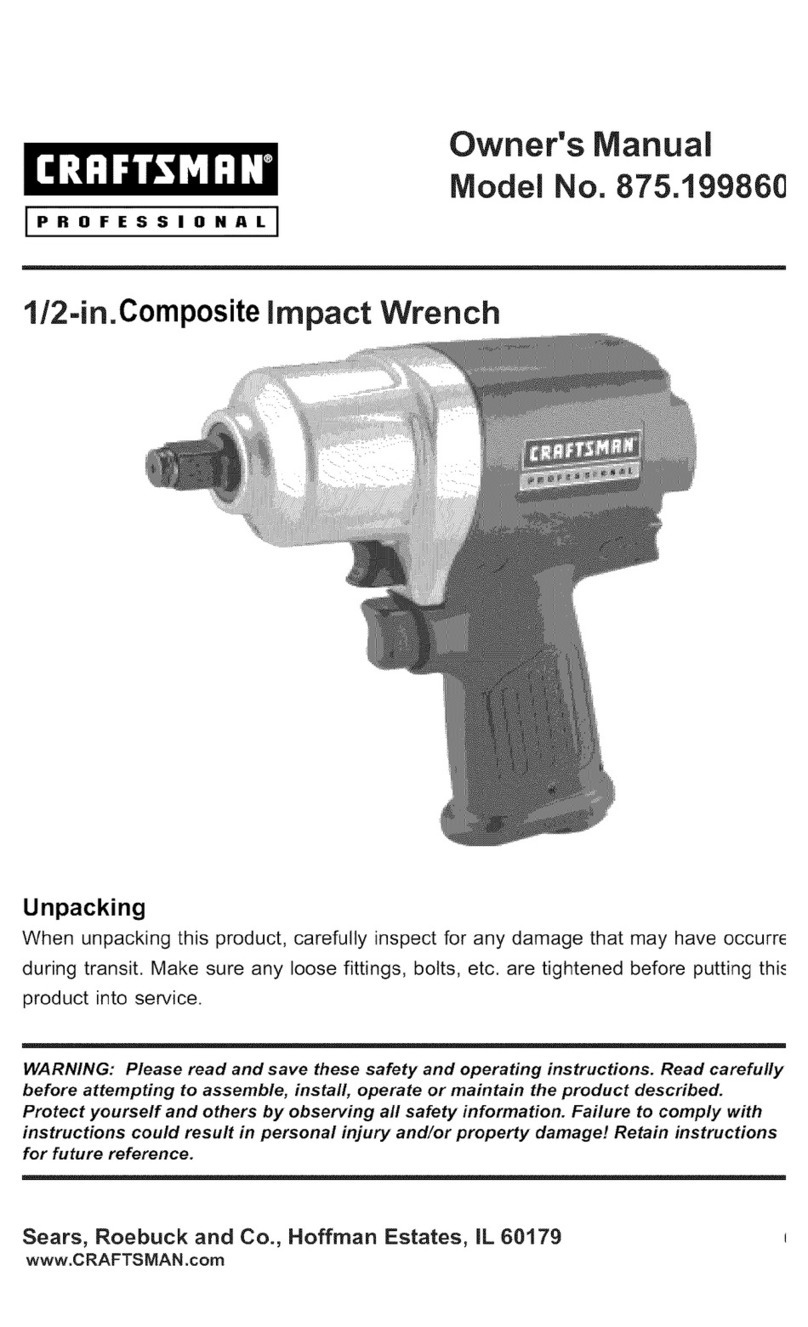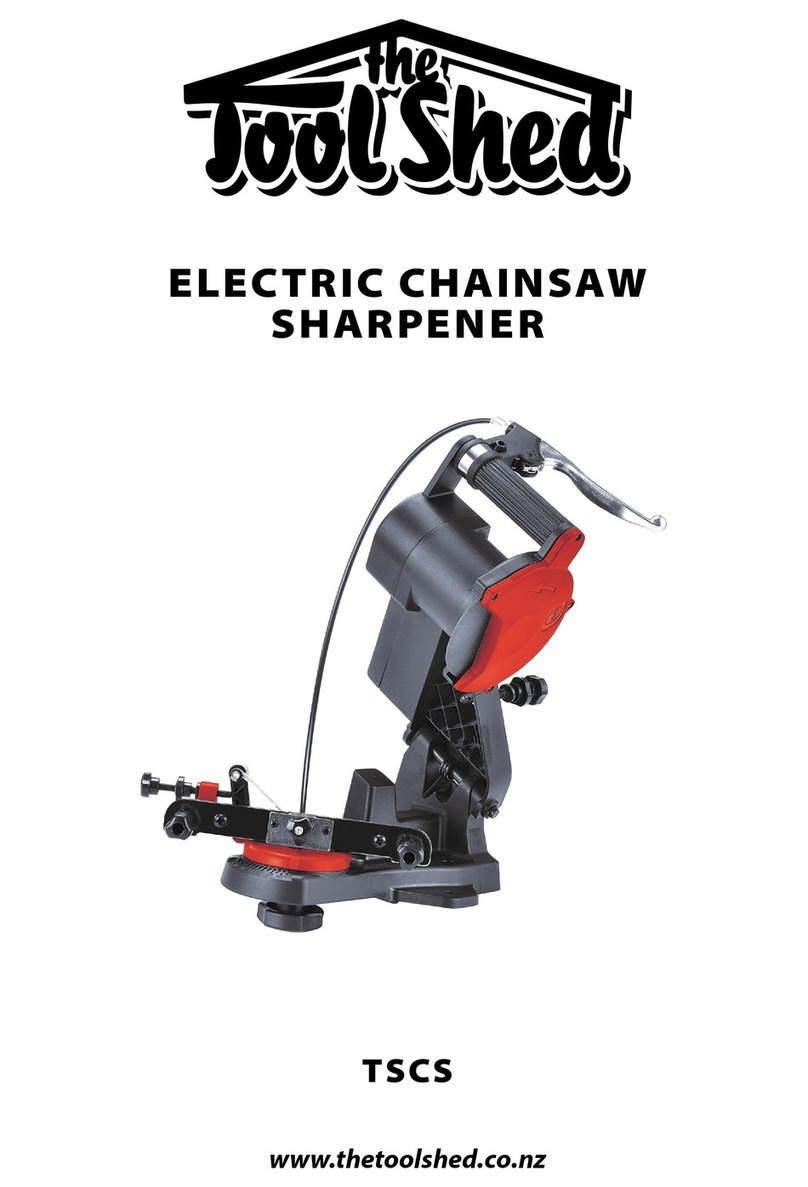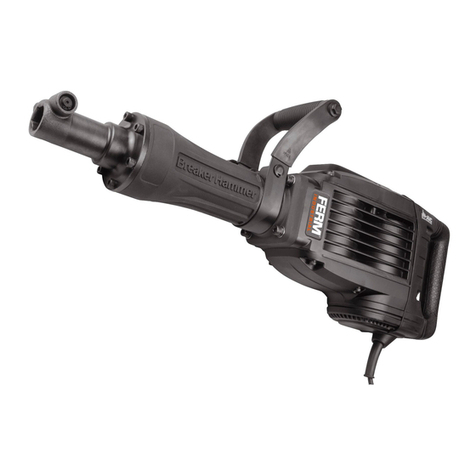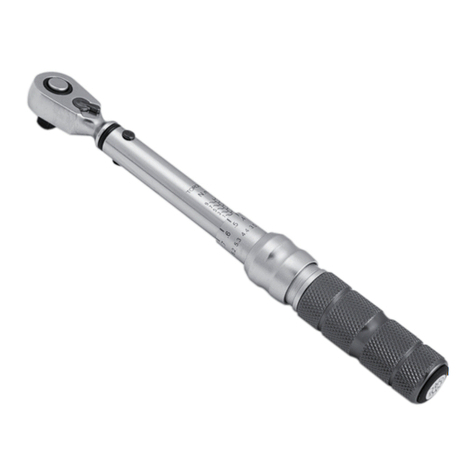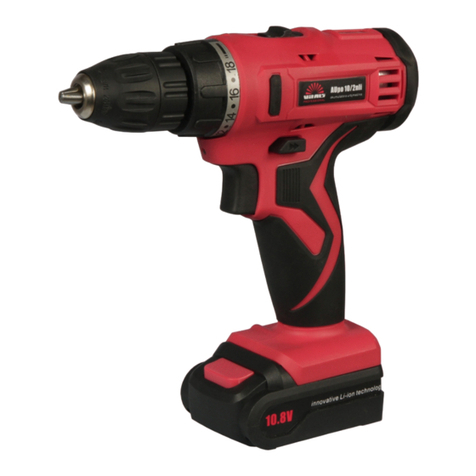AFF 862ASD User manual

Model 862ASD
150 Ton Super Duty Shop Press
INSTRUCTION MANUAL
Page 1
SPECIFICATIONS
Rated Capacity
Dimensions
Ram Stroke
Bed Depth
Bed Width
Throat Depth
Throat Width
Hydraulic
Pressure
Working Range
Air Fitting
Air Pressure
Weight
CONTENTS:
150 Ton
55" W x 85" H
12.78"
14.17"
39.37"
13/15"
25.24"
57.7 MPA
2.67" to 35"
1/4" NPT
120-200 PSI
2,645 lbs.
Page 1
Page 2-5
Page 6-14
Page 15
Page 15
Page 16
Page 17
Page 18
Page 19
Page 20
Page 21
Page 22
Page 23
Specifications
Warning and Safety
Assembly
Operating Instructions
Preventative Maintenance
Shop Press Diagram
Shop Press Parts List
Ram Diagram
Ram Parts List
Pump Diagram
Pump Parts List
Bed Winch Diagram/Parts List
Warranty Information

Page 2
This manual includes the hazard symbols dened below when the operations or maintenance job involves a potential
danger. These symbols describe the level of danger involved in performing a job on the tool and the precautions to
take to avoid the hazard.
Term Sign Description
Danger Label
Danger Labels indicate an imminently hazardous
situation that if not avoided, WILL result in death or
serious injury.
Warning Label
Warning Labels indicate a potentially hazardous
situation, which if not avoided, COULD result in death
or serious injury.
Caution Label
Caution Labels indicate a potentially hazardous situation,
which if not avoided, MAY result in minor or moderate
injury.
Note NOTE: Short piece of additional information with the purpose of
adding or emphasizing important points in the text.
Safety Requirements
Important
Make sure to read, understand, and strictly follow all safety related instructions before operation or maintenance of
this equipment.
Intended Users
This manual is to be made available to all persons who are required to install, congure or service equipment described
herein, or any other associated operation.
Application Area
The machinery described is intended for machinery production and assembling spare parts. It is used to press, size,
assemble, rivet small parts in process and not for other use.
Personnel
Installation, operation and maintenance of the equipment should be carried out by qualied personnel. A qualied
person is someone who is technically competent and familiar with all safety information and established safety
practices with the installation process, operation and maintenance of this equipment; and with all the hazards
involved.
!WARNING and SAFETY
!

Page 3
Hazards
Personnel safety must have top priority. Thoroughly read the operation manuals to completely understand proper
procedures before maintenance or inspection work.
Basic Safety Instructions
Failure to comply with the following could result in serious injury or death.
1) Periodic inspections or maintenance work must be carried out by two or more persons.
2) Read and understand the safety manual.
3) Read and understand all the attached manuals.
4) Attach visible signs on the equipment so that everyone recognizes and understands that maintenance or
inspection is ongoing.
5) Post a list with emergency phone numbers nearby the working area.
6) Operator should be aware of what to do in case of an emergency (refer to the Procedures for Emergency
Situations); know the location of the rst-aid-kit, and the location of the re extinguisher. Also learn how to
use a re extinguisher.
7) Alert anyone around the Tool whenever planning to operate it during maintenance or inspection work.
8) Always use proper hand tools and jigs during maintenance or inspections. Before operating the machine,
check for any hand tools or jigs left inside it. For your own safety, NEVER try to remove them with the
machine under operation. Consider SAFETY FIRST.
9) The operator must wear protective clothes, gloves, safety helmet, shoes and ear protection during
operation.
10) To prevent back injury, heavy parts (or units) must be moved by two or more persons.
11) Before powering the machine, alert the persons around it.
12) Be careful not to be pinched by moving parts.
13) Use ONLY CARRIER specied for the tool, and set it in a correct position.
14) To avoid accidents, always be aware of any on-going work on the machine. Also, always stay focused on
the job to be done.
Safety Instruction and Warnings
1. Before maintenance on pressured parts in the machine, you MUST release the pressure in the pressured
system. At the same time, DO NOT stand in the direction facing the charger, the operator should be on the
opposite side and remember DO NOT strike, press or transfer until it is discharged.
2. When it is necessary to exchange die after running, operators should wear gloves or use tools to operate and
avoid injury.
IMPORTANT
This press is shipped with a removable Guard, determine if the included guard is appropriate for the
application, due to the wide variety of pressing / bending applications, it is impossible to incorporate one
guard that will apply to all applications. ALWAYS ENSURE THAT THE OPERATOR AND BYSTANDERS ARE
PROPERLY GUARDED FROM THE POSSIBILITY OF FLYING DEBRIS.
NOTE:
Immediately stop operating the equipment if not working properly. Contact certied technical support engineers
for repair. The equipment must not be operated without approval from the certied technical support engineer.

Page 4
Prohibited Dangerous Actions
This section describes examples of dangerous actions not only during equipment operation, but also during
maintenance and inspections. To avoid accidents, thoroughly read and understand the instructions below regarding
dangers related to each mechanism prior to any maintenance or inspection work.
1) Use a qualied person to keep the lift in good condition. Keep it clean for best and safest performance.
2) The maximum load is 150 Ton, DO NOT exceed this rated capacity. Never apply excessive force to a work piece and
always use the pressure gauge to accurately determine the applied load. Burst hazard exists if hose or connection
pressure exceeds rated pressure.
3) Shop presses are designed for automotive, truck, implement, eet, and industrial repair shops where
pressing, bending, straightening, forming or holding is required. Each press includes a cylinder, a pump, and
lifting bar which provides a safe way to raise and lower the bed frame, and a pressure gauge for monitoring
the applied press force.
4) Keep children and unauthorized persons away from the work area.
5) Remove loose tting clothing. Remove ties, watches, rings and other loose jewellery, and contain long hair.
6) Wear ANSI approved impact safety goggles, full-face impact safety shield and heavy-duty work gloves when
operating the press.
7) Keep proper balance and footing, wear nonskid footwear and do not overreach.
8) Only use this press on a surface that is stable, level, dry and not slippery, and capable of sustaining the load.
Keep the surface clean, tidy and free from unrelated materials and ensure there is adequate lighting.
9) Inspect the press before each use. Do not use if bent, broken, cracked, leaking or otherwise damaged, any
suspect parts are noted or it has been subjected to a shock load.
10) Check to ensure that all applicable bolts and nuts are rmly tightened.
11) Ensure that work piece is center-loaded and secure.
12) Keep hands and feet away from bed area at all times.
13) Do not use the shop press to compress spring or any other item that could disengage and cause a potential
hazard. Never stand directly in front of loaded press and never leave loaded press unattended.
14) Do not operate the press when you are tired or under the inuence of alcohol, drugs or any intoxicating
medication.
15) Do not allow untrained persons to operate the press.
16) Do not make any modications to the press.
17) Do not use brake uid or any other improper uid and avoid mixing dierent types of oil when adding hydraulic
oil. Only good quality hydraulic jack oil can be used.
18) Do not expose the press to rain or any other kind of bad weather.
19) If the press needs repairing and/or there are parts that need to be replaced, have it repaired by authorized
technicians and only use the replacement parts supplied by the manufacturer.
WARNING: The warnings, cautions and instructions discussed in this instruction manual cannot cover all possible
conditions and situations that may occur. It must be understood by the operator that common sense and caution are
factors which cannot be built into this product, but must be supplied by the operator.
Environmental Pollution
If the substances you use come under the ordinances concerning environmental pollution, follow the ordinances to
discharge and dispose of such substances. If you commission industrial waste companies, you should conrm the
way of nal processing.

Page 5
Check for the safety of people working around the Tool, before powering it.
Warning Label
Drawings below show warning labels attached to the machine.
1Hand crush force from above
2Read operator’s manual
3Consult technical manual for
proper service procedures
4Must wear protective clothes
5Must wear protective gloves
6Must wear safety helmet
7Must wear protective shoes
8Must wear ear protector

Page 6
Prepare Before Using
The units are generally too heavy to be moved by hand. Therefore, use the correct transport and lifting equipment.
The weights and dimensions of this press are shown in the chart above.
When moving the machine, please use the proper lifting equipment and follow the instructions as follows.
Working Area Conditions
Users should provide enough space for the equipment and the environment should be clean, non-ammable,
corrosive and dust free.
A working area of 10m is to be kept free both in front of and behind the machine while it is in operation so that it is
always easily accessible.
Unpacking
When opening the packaging, make sure to use the proper tools, wear protective clothing, gloves, safety helmet.
Make sure that the product and parts in the box are complete and identical to the parts list. If not, contact the
manufacturer immediately.
Disposal of the packaging
The packaging of these machines consists of PVC lm and polywood case. The proper disposal of the packaging is
the responsibility of the customer.
No. Item Unit Value
1 Capacity Ton 150
2 Stroke mm 350
3 Pressure of Hydraulic System MPa 57.7
4 Working Range mm 68~889
5 Air Inert Fitting NPT 1/4"
6 Air Pressure PSI 120-200
7 Bed Size Width mm 1000
ASSEMBLY

Page 7
Installation
The machine must only be installed and commissioned by qualied personnel!
All relevant safety regulations must be strictly adhered to!
Prior to First Use
• Before the first use, fix the machine to the floor by anchor bolt. Ensure the standing surface of the machine
site is firm and horizontal, and that sufficient lighting is provided.
• Clean the machine thoroughly. Before first use of this product, pour a teaspoon of good quality, air tool
lubricant into the air supply inlet of the lift control valve, connect to air supply and operate for 3 seconds to
evenly distribute lubricant.
This press is shipped with a Pressing Adapter Set, which includes various size and capacity Pressing Adapters
– EACH ADAPTER HAS A MAXIMUM CAPACITY BASED ON ITS SIZE
– DO NOT USE ADAPTER BEYOND RATED CAPACITY.
IMPORTANT
This press is shipped with a removable guard, determine if the included guard is appropriate for the
application, due to the wide variety of pressing / bending applications, it is impossible to incorporate one
guard that will apply to all applications. ALWAYS ENSURE THAT THE OPERATOR AND BYSTANDERS ARE
PROPERLY GUARDED FROM THE POSSIBILITY OF FLYING DEBRIS.

Page 8
1. To avoid any damage to the machine
or personal injury, remove the small parts
packed in case first.
2. Remove the polybag covering the press.
3. Use a fork lift to take the press out of case.
4. Double check parts to ensure they are all
there. The parts should include press body
frame, pump, base, support, hardware kits, etc.
(For details refer to the following sheet)
No. Description Req No. Description Req
1Welded Frame 113 Bolt M14*40 12
2Ram. 114 Washer 1412
3Oil Tank 115 Lock Washer 14 12
4Pressure gauge 116 Nut M14 12
5Moving Components 117 Foot Base 2
6 Hand Wrench 1 18 Pin 4
7 Handle for Wrench 1 19 Bolt M10*30 4
8Pump Assy 120 Washer 10 4
9Selector Valve Handle 121 Frame Bed 1
10 Handle for Pump 122 Grid Guard 1
11 Foot Pedal 1 23 Retainer Ring 8
12 Bracket Support 4

Page 9
Fig. 1 Fig. 2
BASE ASSEMBLY
1. Assemble the base to the body frame by Bolt M14*40(03), Washer 14(04) and Lock Washer 14(05). (refer to fig 1)
2. Fix the 4pcs supports (35) to the body frame part B and C by using BoltM14*40(03), Washer 14 (04),Lock washer 14
(05)and Nut M14(06) .(refer to fig.2)
PRESSURE GAUGE ASSEMBLY
1.Take off the plunger from Oil hose(16), pay attention to the O-ring should keep in Oil hose(16)
2.Screw out the Nut(77)from Pressure gauge(81)
3.Tighten the Pressure gauge(81) to the Frame(90) by using Nut(77)
4.Tighten the Oil Hose(16)and Pressure Gauge(81) (Refer to Fig.3)
Fig. 3

Page 10
PUMP ASSEMBLY
1. Fix the pump assembly. (23) to the body frame by using Bolt(34) and Lock washer 10 (33). 17 (refer to fig.4)
2.Take off the plunger P62 from the Oil hose(P01) .(refer to fig.5)
3.Take off the plunger(88) from Valve(87) (Avoid the O-ring fall down from Valve(87) refer to fig 6
4.Assembling Oil Hose(P1) to the Valve(87) (Avoid the O-ring fall down from Valve(87 refer fig 7
5. Assembling the O-ing(P57) to Bend Connector(P56) than wring the Oil Hose(14)to Bend Connector(P56) and
tighten it.
6. Assembling the O-ring(P55)to Bend Connector(P54), then Wring the Oil hose (20) to the Bend
connector(P54), and tighten it. (Refer to Fig.8)
8.4.5 Take out the handle for selector (89) and assembling it to the selector(23)(Refer to Fig.9)
fig.4 fig.5 fig.6 fig.7
fig.8
fig.9

Page 11
PIN ASSEMBLY
Take out the Pin(60)and retainer ring(61). Insert the pin(60)to the hole on the frame, then fix the retainer ring(61).
Refer to Fig.10
GRID GUARD ASSEMBLY
Take out ScrewM8*45(83) , washer(84),lock washer 8(85)and Nut 8(85), assembling the slide(92/93)to the
frame, and tighten it. Then insert the Grid guard(82). Refer to Fig.11
Fig.11
Fig.10
MOVING THE RAM
1.Insert the handle (12) to the worm connecting shaft (M1)
2.Turning the handle clockwise, and the ram moves left (Direction A).
3.Turning the handle (12) anti-clockwise, and the ram moves right (Direction B)
Refer to Fig.12

Page 12
BED ADJUSTMENT
1. Assembling the Handle (12) to Hand wrench, turn the Handle(12) clockwise, then the Bed Frame (63)will
move up(A) and turn the Handle(12) anticlockwise, the Bed Frame(63)will move down(B).(Refer to Fig.13)
READ BEFORE USING
1.Open the Valve (87) by turning it anticlockwise to position A. (Refer to Fig.14)
2.loosen the exhaust Screw by turning it anticlockwise.(Refer to Fig.15)
Connect to the air source
Connect Foot pedal to the air source, make sure that the air pressure from the source is
between7.5Bar and 8.5Bar.
Refer to Fig.16
Fig.13
Fig.14
Fig.15
Fig.16

Page 13
Before you purge the air, make sure that all previous assembly steps have been completed
Fig.17
Air Purge for Pump 1. After connecting to the air source turn the selector to
position 2 and press the foot pedal for 30 seconds
2. Turn the selector to position 3 and press the foot pedal.
Piston rod will move down. After the piston rod is
completely lowered turn the selector to position 1 to
make the piston rod move up.
Turn the selector to position 2 and operate the handle
30 times
Repeat the above step 3 times to make sure the air has
been properly purged
Air Purge for Manual
Pump
Repeat Air Purge

Page 14
PISTON EXTENSION AND RETRACTION
1.Extending the Ram can be operated either manually or by air.
Operating by air:
1.Connecting the air hose of air foot valve to the Air source. (fig 16)
2.Turn the handle lever of selector valve to position 3. (fig 17)
3.Depress the air foot valve (32), when the piston rod is not under load, then the piston rod extending
quickly. When the piston rod is under load, then the piston rod will extend slowly.
Operating manually:
1.Insert the handle (26) to the handle base(P43), Turn the handle lever of socket valve to position 3.
(fig 17) when the piston rod is not under load, then the piston rod extending quickly. When the piston
rod is under load, then the piston rod will extend slowly.
2. Retracting the ram can be operated manually or by air.
Operated by air:
1.Connecting the air hose of air foot valve to the Air source. (fig 16)
2.Turn the handle lever of selector valve to position 1. (fig 17)
3.Depress the air foot valve (32), then the piston rod returns quickly.
Operating manually:
1.Insert the handle (26) into the handle base(P43), pumping the handle returns the piston rod quickly.
2. The operator can retract the piston rod either by air according to process or manually according to process
3.To stop the movement of the piston rod: stop pumping the handle tube (26) or release the air foot valve
(32), the piston rod will stop moving. Then turn the handle lever of selector valve to position 2. (fig 17)

Page 15
OPERATION
1. Turn the handle lever of selector valve to position 3, then depress the air foot valve (32), and the piston
rod will extend quickly. When the saddle gets close to the work piece, change to manual operation.
2. According to handle tube usage, insert the handle tube into the handle base(P43) and pump the handle
tube, the piston rod extends slowly. Make sure that work piece and piston rod are aligned properly.
3. After adjusting the position of work piece, operator can press by air, or manually.
4.Release the pressure: turn the handle lever of selector valve to position 2, the pressure on the piston
rod will release automatically.
5. Retract piston rod in accordance with the previous instructions.
6.Remove the work piece.
7.When complete, disconnect the air hose from the compressor and clean the machine.
PREVENTATIVE MAINTENANCE
1.Use clean and dry cloth to clean the press surface, and grease the connecting part and moving part periodic.
2 .When the press is not in use, fully return the piston rod and stocked in dry place.
3.When working efficiency is reduced, purge the air in the hydraulic system according to assembly and operation
instructions.
4.Oil volume check: The operator can check if the oil volume is sufficient by pumping the handle tube to check if
the piston rod can extend fully (300mm). If the oil volume is low, add hydraulic oil to the oil tank as follows:
remove the screw (95) on the oil tank, add hydraulic oil then tighten the screw (95) again. After adding the oil,
perform air purge according to process 13.

Page 16
SHOP PRESS DIAGRAM

Page 17
No. DESCRIPTION QTY/UNIT No. DESCRIPTION QTY/UNIT
1 Welded Frame 1 52 Spring Cap 9
2 Bracket 2 53 Spring For Ram 4
3 Bolt 12 54 Bolt 4
4 Washer 12 55 Big Roller 1
5 Lock Washer 12 56 Protection1 3
6 Nut 12 57 Protection2 3
7 Saddle 1 58 Roller3 2
8 Screw 1 59 Pin 2
9 Bolt 4 60 Pin 4
10 O-Ring 2 61 Retainer Ring 8
11 Ram 1 62 Lifting Roller 2
12 Screw 4 63 Frame Bed 1
13 Ram Plate 1 64 Pipe 4
14 Oil Hose 1 2 65 Pipe Assy 2
15 Oil Hose 2 1 66 Hand Wrench 1
16 Oil Hose 1 67 Handle For Wrench 1
17 Joint Connector 1 68 Bolt 4
18 Lock Washer 14 69 Bolt 1
19 Bolt 2 70 Cable 1
20 Oil Hose1 1 71 Cable 1
21 Oil Tank 1 72 Cable Connector 3
22 Bolt 3 73 Retainer Ring 12
23 Pump 1 74 Roller2 1
24 Bolt 3 75 Retainer Ring 2
25 Washer 1 76 Cable Protection 3
26 Handle 1 77 Nut For Pressure Gauge 1
27 Handle Cover 1 78 O-Ring 1
28 Air Hose 1 79 Connector For Pressure 1
29 Air Hose Connector 1 80 Nylon Ring 1
30 Air Hose 1 81 150T Pressure Gauge 1
31 Screw 1 82 PRESS PIN LINKER 1
32 Foot Pedal 1 83 4mm Spanner 1
33 Washer 10 84 3mm Spanner 1
34 Bolt 6 85 Pinφ10 1
35 NUT 2 86 Pinφ12 1
36 Bolt 1 87 Pinφ16 1
37 Washer 1 88 Pinφ18 1
38 Bolt Base1 1 89 Pinφ20 1
39 Nut 1 90 Pinφ22 1
40 Jiont Nut 1 91 Pinφ25 1
41 Lock Washer 1 92 Pinφ30 1
42 Connector Bean 1 93 Block for pin 1
43 Spring 2 94 Frame for pin 1
44 Screw 4 95 Bracket Support 4
45 Bolt Base2 1 96 OIL HOSE 1
46 Washer 1 97 Grid Guard(PC plate) 1
47 Nut 1 98 Screw 4
48 Screw 1 99 Lock Washer 4
49 Retainer Ring 4 100 Washer 4
50 Bearing 4 101 Nut 4
51 Squre Steel 2 102 Heel block 2

Page 18
R17
R16
R23
Rl9
j
R18
R13
R12
(
R03
RZO
ROB
R09
R09
ROS
R07
RAM DIAGRAM

Page 19
No. DESCRIPTION QTY/UNIT
R01 Round Nut 1
R02 Lengthen Connector 1
R03 Nylom Block 2
R04 Washer 2
R05 O-Ring 2
R06 O-Ring 1
R07 Piston Rod 1
R08 O-Ring 2
R09 Washer 2
R10 Piston 1
R11 Limited Valve Core 1
R12 Spring 1
RAM PARTS LIST
No. DESCRIPTION QTY/UNIT
R13 Screw 1
R14 O-Ring 2
R15 Washer 2
R16 Nut 1
R17 Ram 1
R18 Copper Washer 1
R19 Bend Connector 1
R20 Screw 2
R21 Steel Ball 1
R22 Nylon Washer 2
R23 O-Ring 2

PUMP DIAGRAM
Page 20
Table of contents
Other AFF Power Tools manuals
